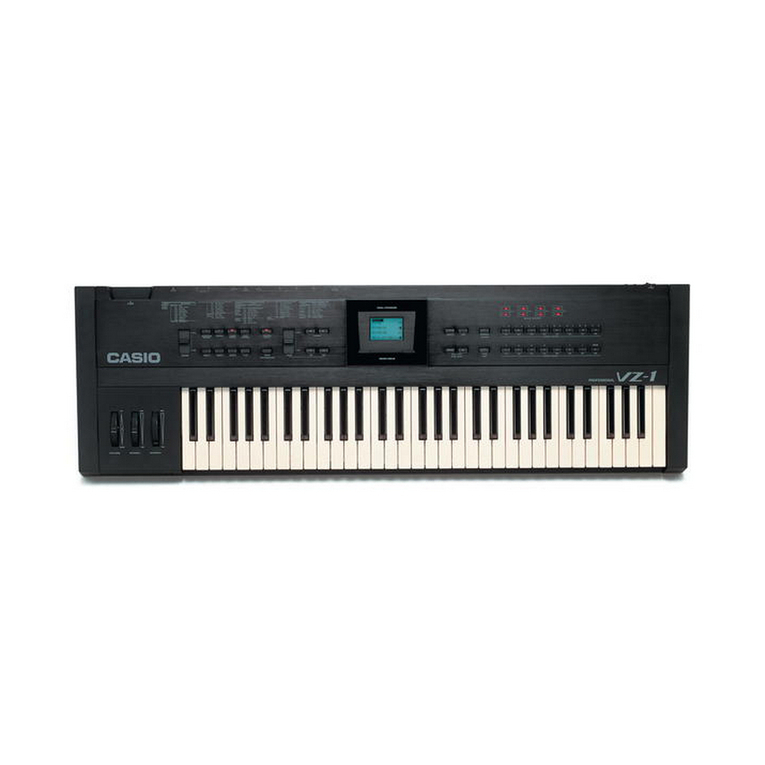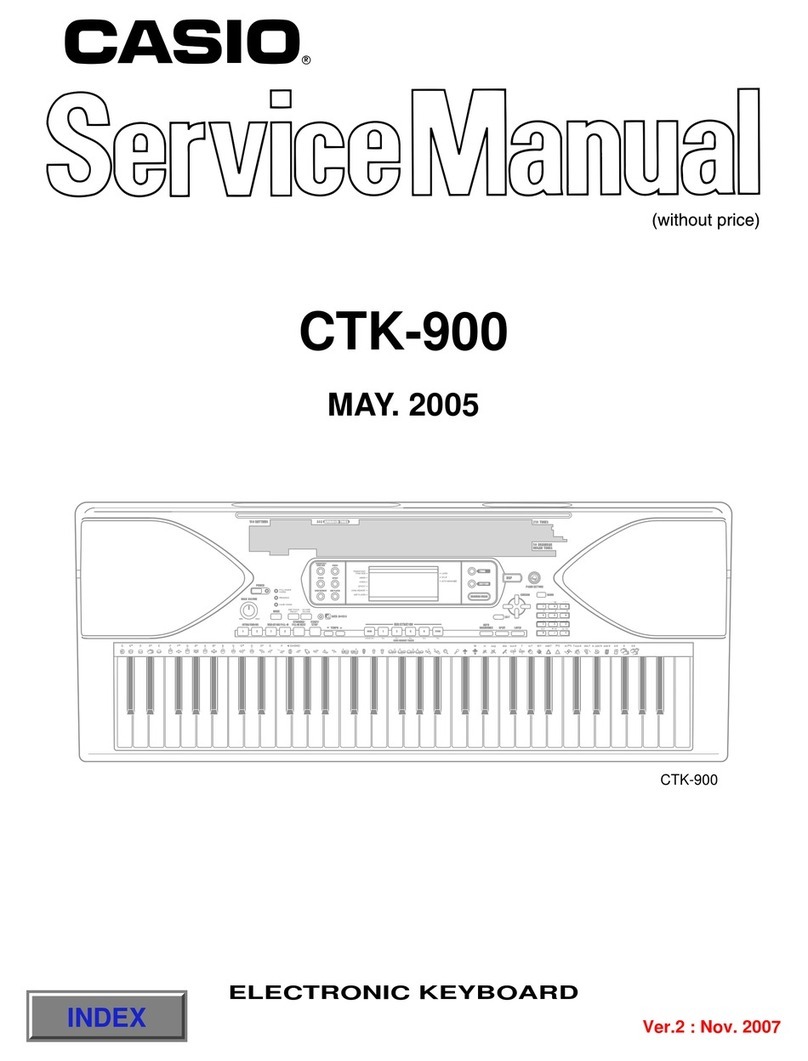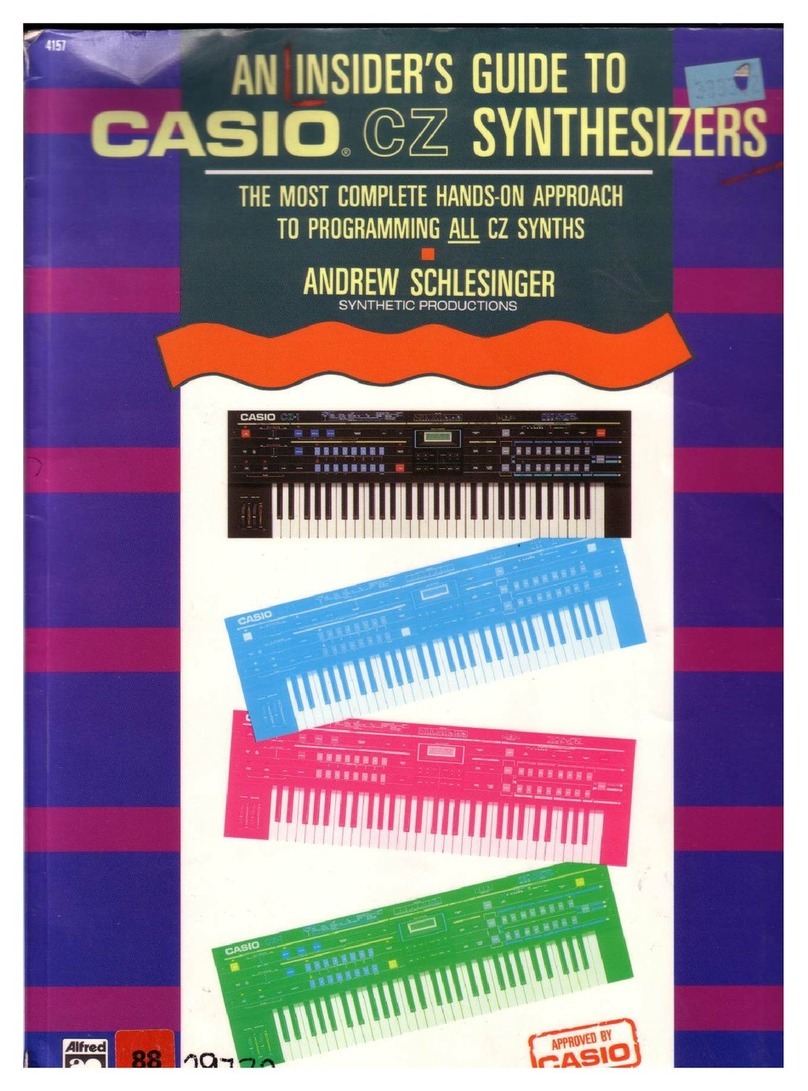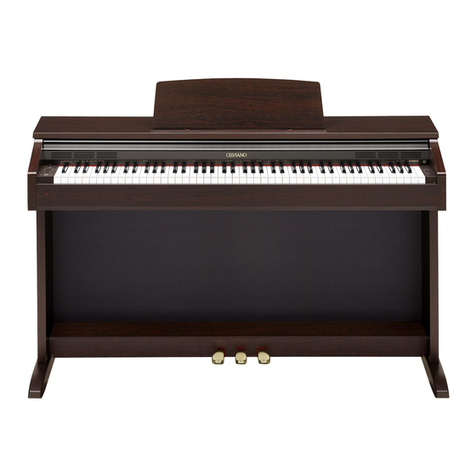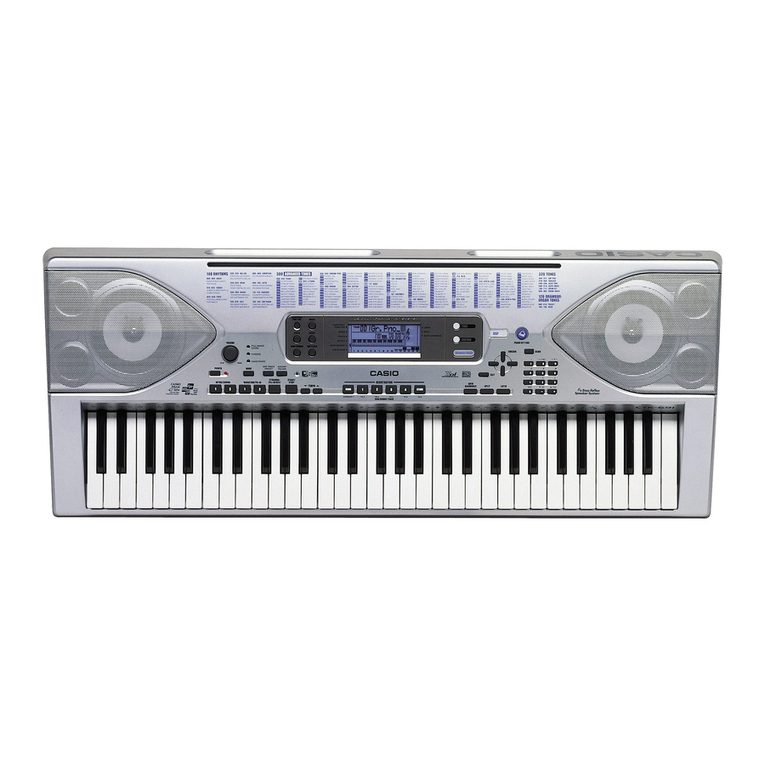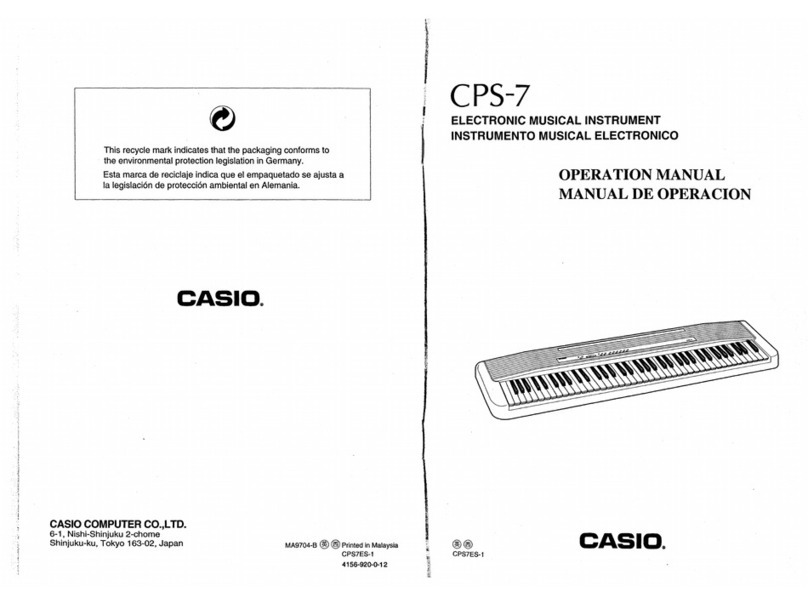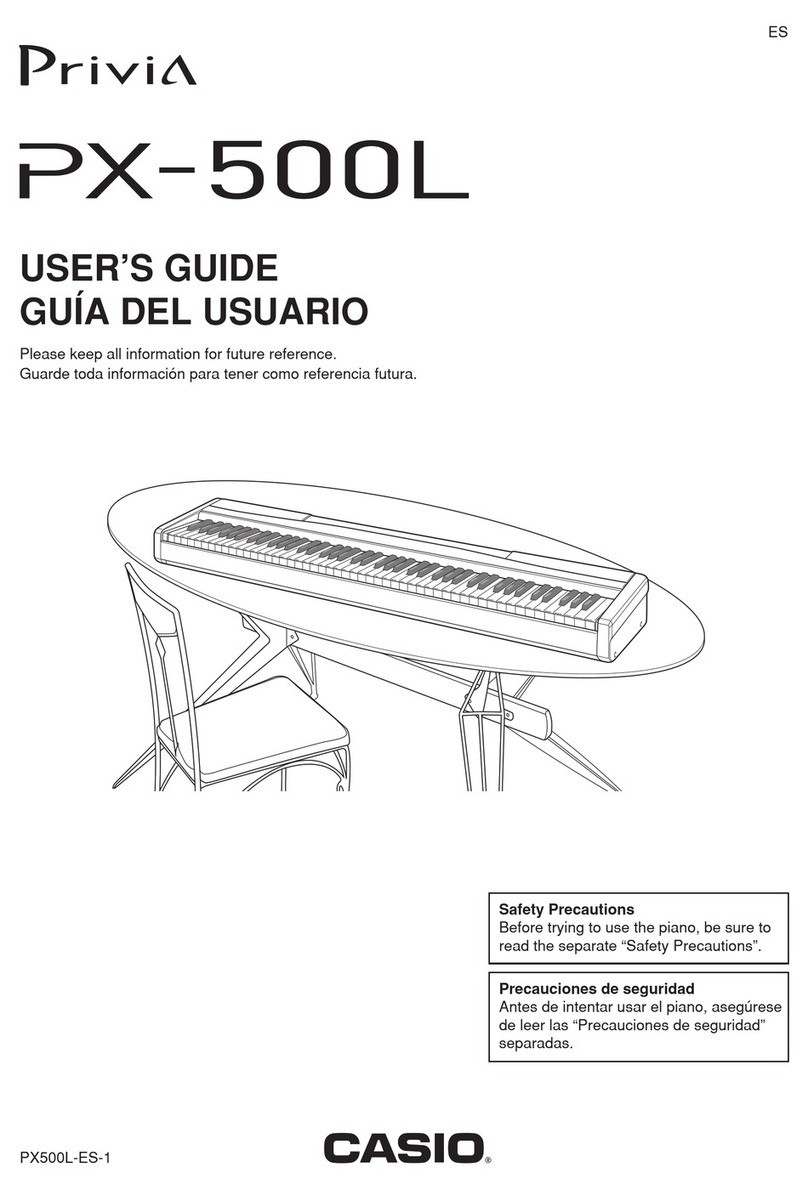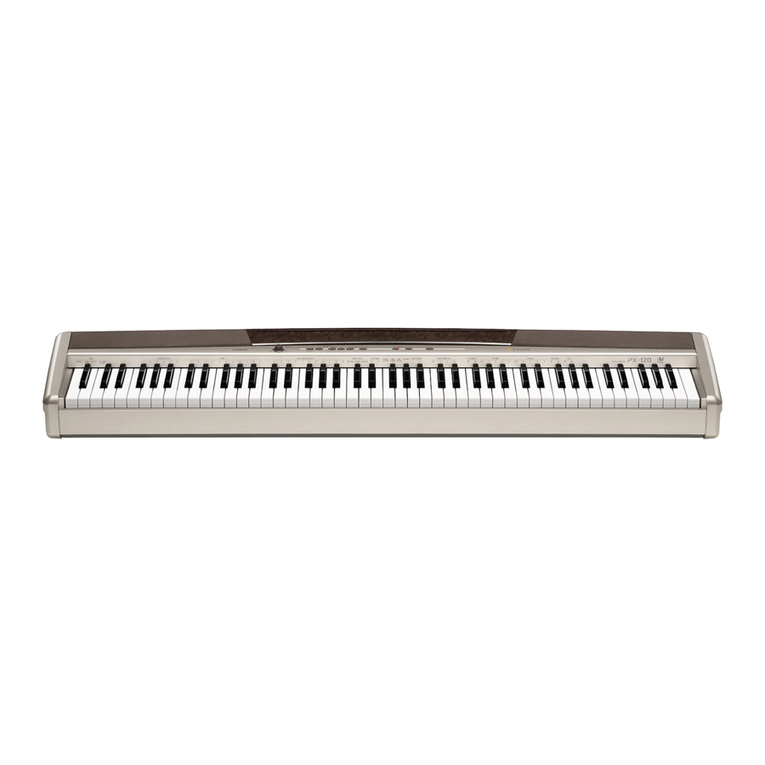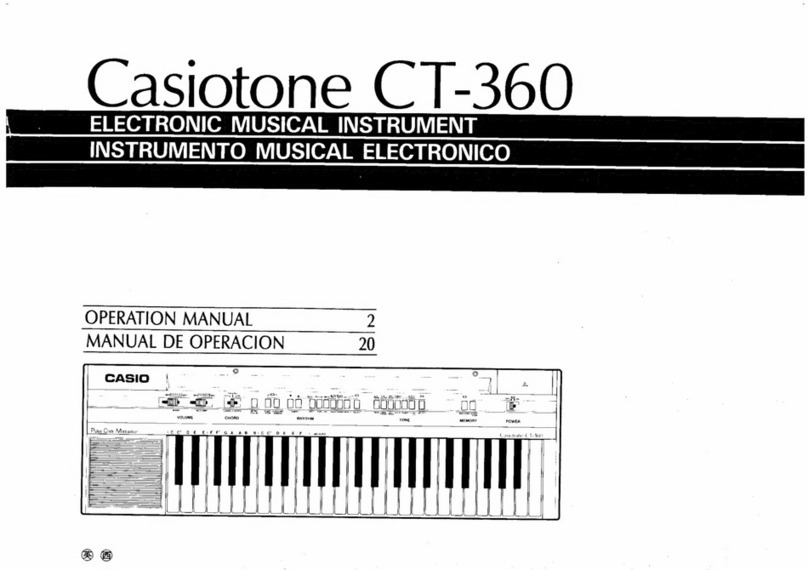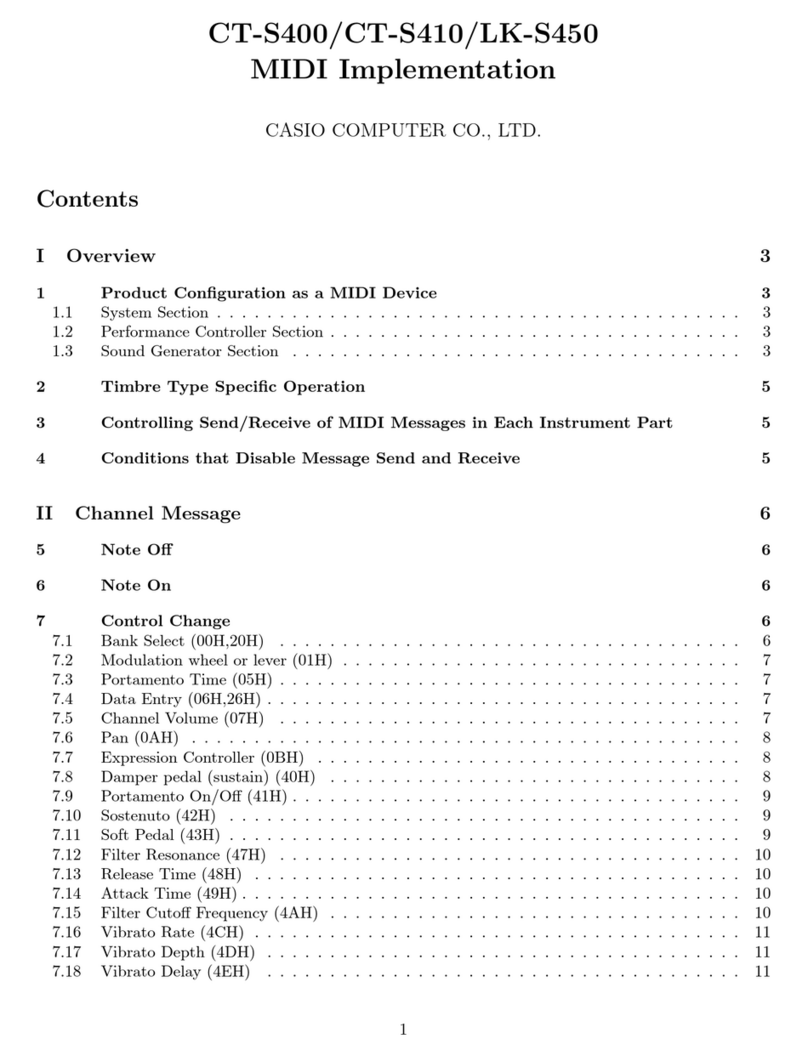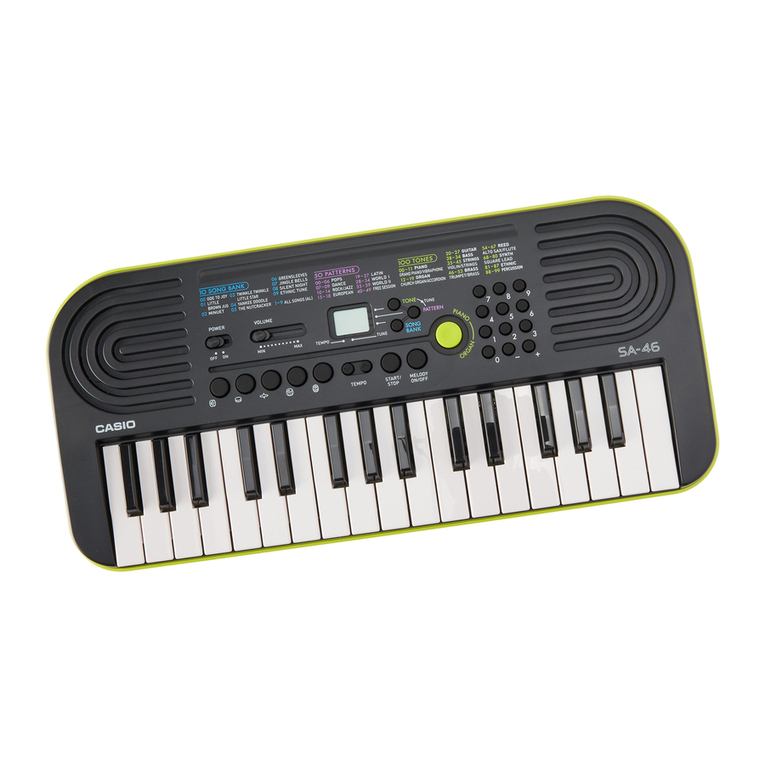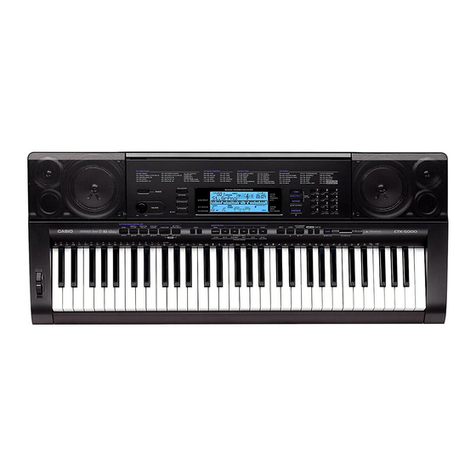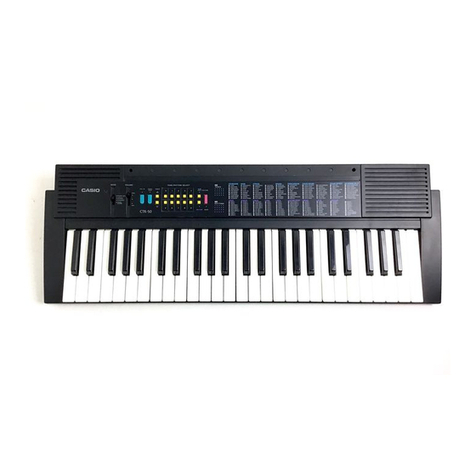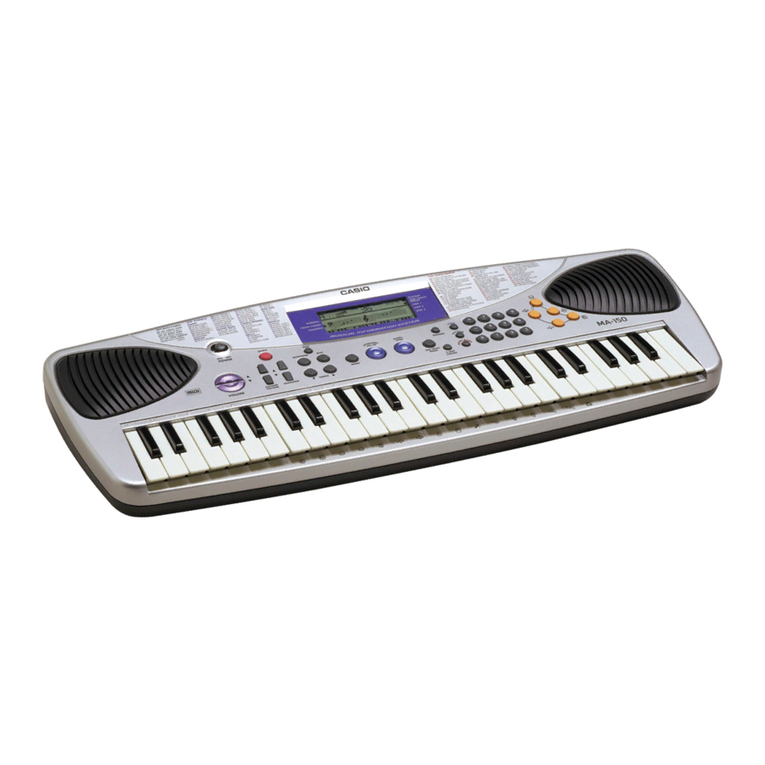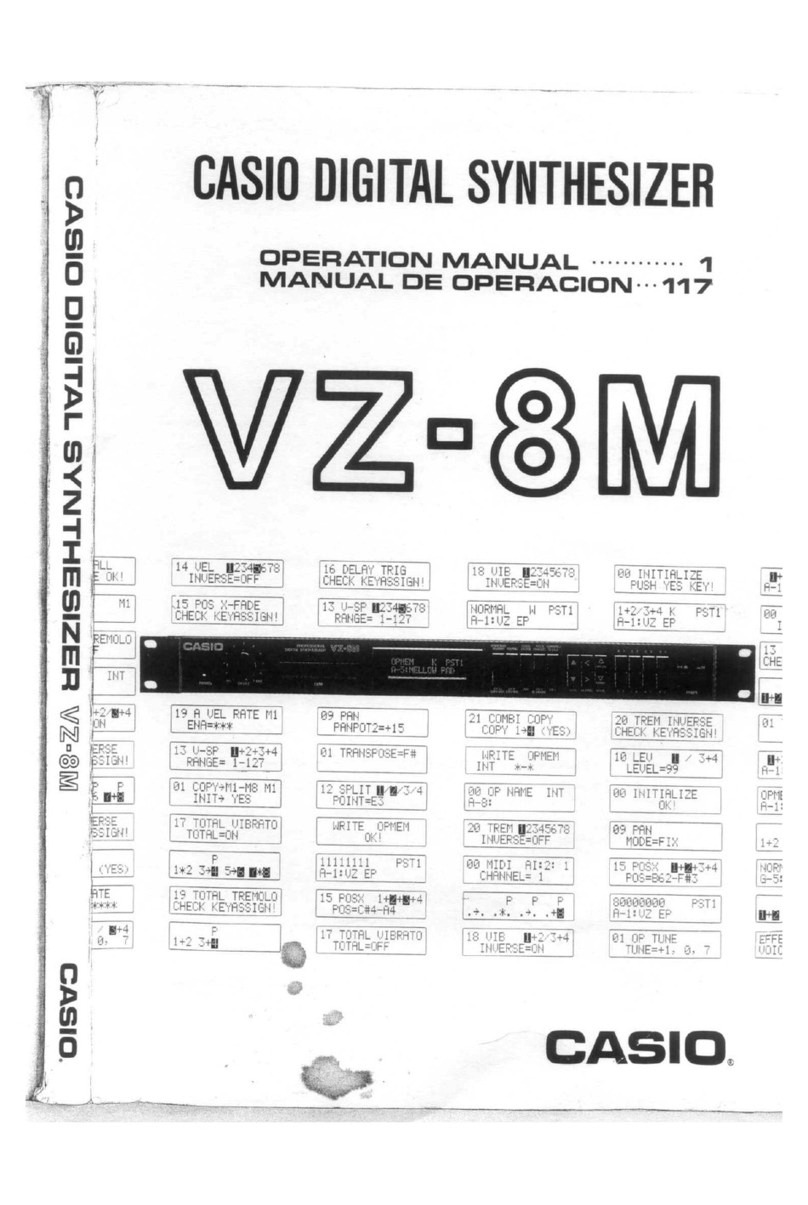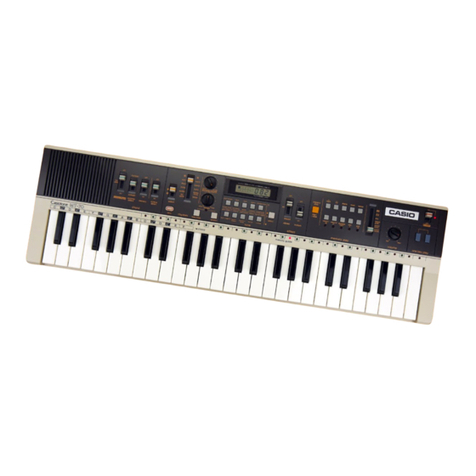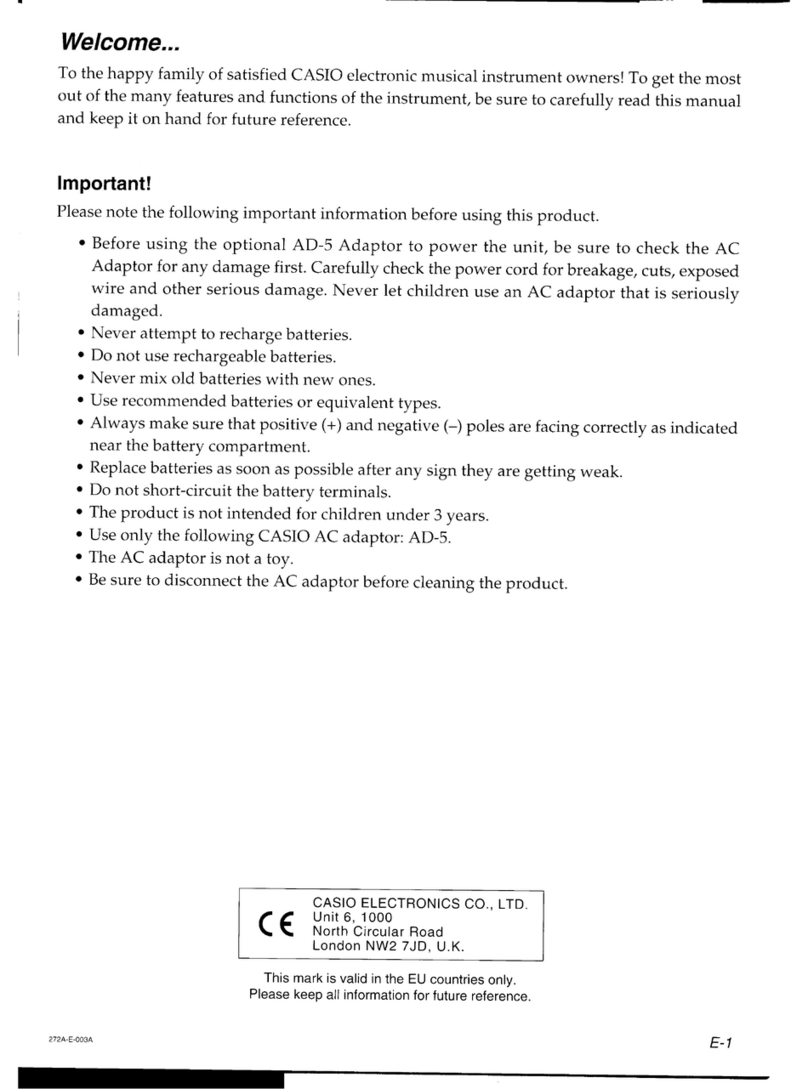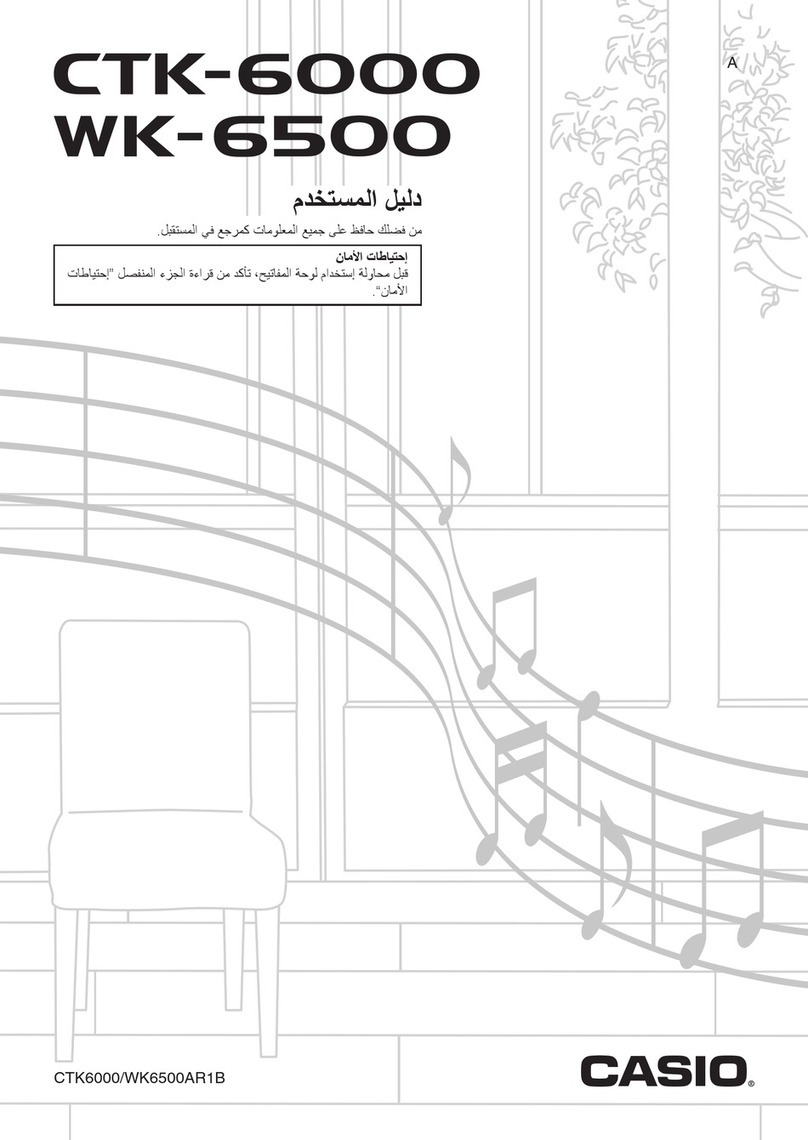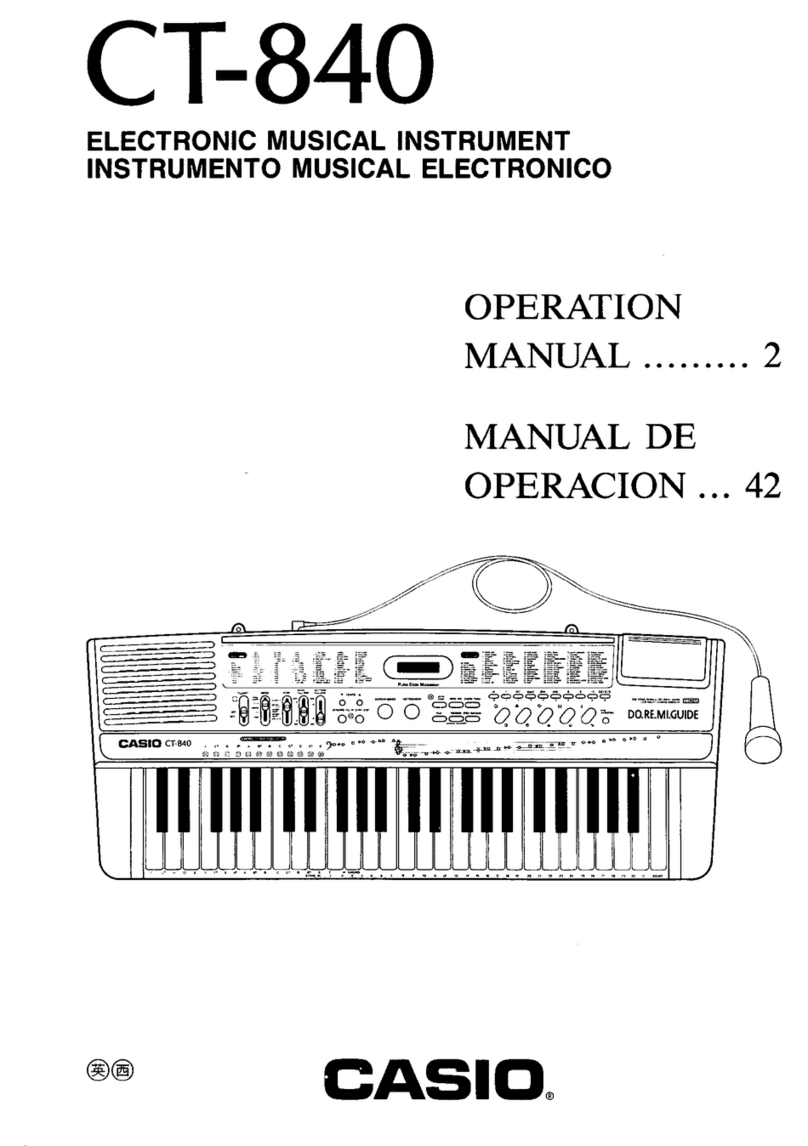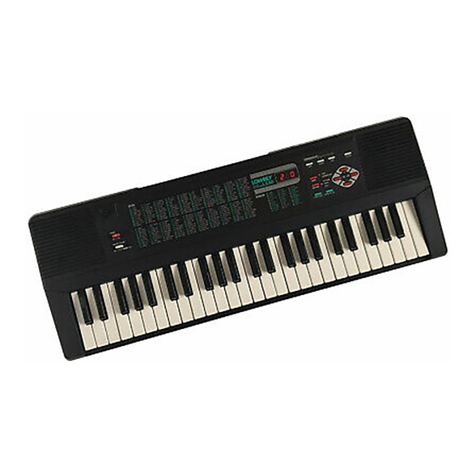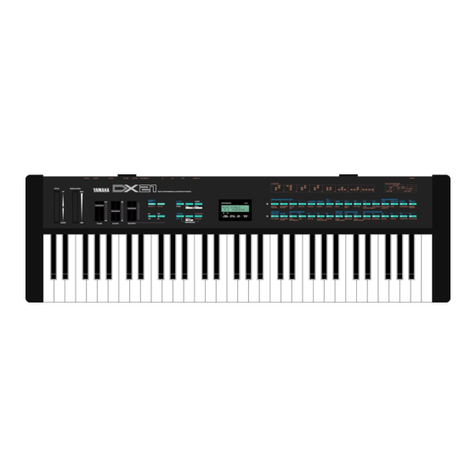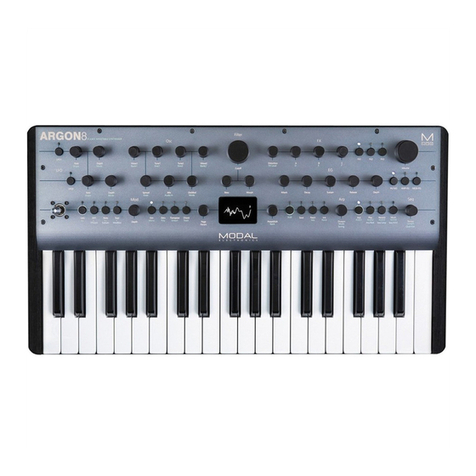©DCW KEY FOLLOW key
Press to make the wave form of the Line
1DCW approach apure sine wave accord-
ing to the pitch of the keys being played.
CdDDCW envelope key
Press to set the wave envelope for Line 1
.
An indicator lights above this key when
ON.
®DCA KEY FOLLOW key
Used to set the time variance between the
upper and lower registers of the keyboard
for DCA1.
ODDCA envelope key
Press to set the parameters of the Line 1
amplifier envelope. An indicator lights
above this key when ON,
®WAVE FORM key
Press to select the basic wave form for Line
2. An indicator lights above this key when
ON.
CftDCO envelope key
Sets the pitch envelope for Line 2. An in-
dicator lights above this key when ON.
C'DCW KEY FOLLOW key
Press to make the wave form of the Line
2DCW approach apure sine wave accord-
ing to the pitch of the keys being played.
IDCW envelope key
Press to set the wave envelope for Line 2.
An indicator lights above this key when
ON.
®DCA KEY FOLLOW key
Used to set the time variance between the
upper and lower registers of the keyboard
for DCA 2.
(ODCA envelope key
Press to set the parameters of the Line 2
amplifier envelope. An indicator lights
above this key when ON.
©VIBRATO key
Press to set the vibrato effect independent-
ly for each tone. Data setting itself is per-
formed in the Data Entry section.
©OCTAVE keys
Press to shift the pitch range of each tone
up or down in one octave steps. Data set-
ting itself Is performed in the Data Entry
section.
©DETUNE key
Press to detune the pitch of Line 1or Line
2without changing the tone, for Line 1'or
Line 2\
©LINE SELECT key
Changes line select in the order UJ -* 20
-* \S\ +3D -> ED \ffl .The indicator
above the selected line combination lights
up.
©RING key
Causes Line 1'or Line 2' to be ring modu-
lated by Line 1. An indicator lights above
this key when ON.
©NOISE key
Causes Line 1
'or Line 2' to be modulated
by noise. An indicator lights above this key
when ON.
©INITIALIZE key
Initializes the settings of the various
parameters (sets the respective data to 0),
thus making it easier to start creating
sounds right from the beginning. Press the
INITIALIZE key and simultaneously press
the key of the parameter to be initialized.
'GENERAL GUIDE
